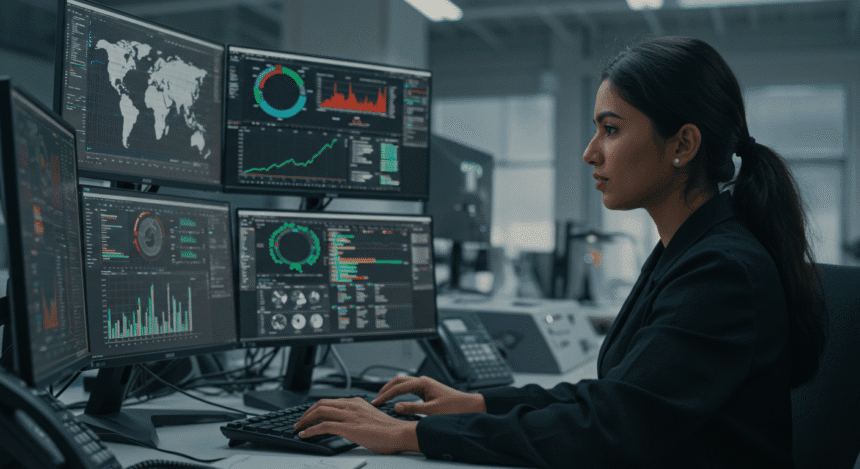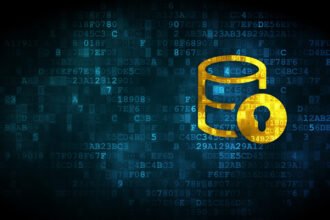Data monitoring is no longer optional for large-scale digital systems. You need to track and check data constantly if you want reliable performance across operations. It is a key way to spot early problems and keep things running smoothly.
There are huge amounts of data being created every second. Rivery author Kevin Bartley reports that global data is expected to hit 181 zettabytes by 2025. You can’t manage that kind of volume without having systems that check for errors, gaps, and slowdowns. Keep reading to learn more.
The Role of Monitoring in Big Data Growth
There are real costs to ignoring data quality issues, especially when they scale. You might end up with corrupted results, failed predictions, or broken dashboards that mislead entire teams. It is a common problem in systems that rely too heavily on automation without human review.
You are not alone if your business handles large sets of digital records or metrics. The global big data technology market was valued at $349.40 billion in 2023, according to Fortune Business Insights. It is growing fast because companies depend on it for daily decisions and long-term planning. You can see how errors at that scale would have ripple effects.
There are still major gaps in how many firms prepare for these challenges. The Cognopia Academy found that only 32% of companies have a formal data strategy in place today. You might be surprised how many rely on outdated tools or loose routines. It is easier to prevent issues than fix them after the fact.
You can build stronger systems by putting monitoring at the center of your data tools. You reduce the chance of error, save time on cleanup, and improve trust in your results. There are real benefits in taking a proactive approach instead of reacting to failure. It is one of the simplest ways to improve decision-making across your team.
Remote and hybrid work has made visibility tougher than ever. When you can’t see how work is getting done, it’s tempting to overcorrect with strict oversight. But too much control doesn’t just kill motivation—it can wreck trust.
This article explores how to apply monitoring insights in ways that support performance without crossing the line. A monitoring tool helps you turn work track data into something useful, human, and focused on results.
When Monitoring Crosses the Line
A study found that 39% of employees say having their online activity monitored hurts their relationship with their employer, and 43% say it drags down company morale.
You want to guide your team, not crowd them. Without clear direction and the right tools, you risk relying too heavily on monitoring without context, which can quickly get messy.
Here are the common trouble spots where good intentions can backfire:
- Lack of Context Around Metrics: Raw data is easy to misread when it’s disconnected from real goals or daily workflows.
- Misuse of Visibility: Focusing on minor details like idle time instead of looking at outcomes can quickly erode trust.
- One-Way Monitoring: Keeping insights hidden from your team signals that monitoring is about control, not collaboration.
- Inflexible Productivity Standards: Applying the same productivity expectations to every role or person without accounting for different work patterns leads to burnout.
5 Ways to Use Monitoring Insights to Strengthen Performance
Monitoring insights don’t have to feel invasive. Used the right way, they empower your remote and hybrid teams to self-correct, focus better, and work with more clarity.
Here’s how to turn insights into alignment without slipping into surveillance mode:
1. Add Context to Every Metric
Metrics only matter when they’re tied to real outcomes. Avoid tracking time just to fill the day – track what actually moves projects forward.
Look at how tools are used, how long tasks take, and what those patterns reveal about workflow. Share this data openly so your team understands what’s being measured and why.
Use it to guide better decisions, not enforce control. When everyone sees the bigger picture, metrics become a support tool instead of a performance trap.
How can the best work tracking app help add context to productivity metrics?
The best work tracking app breaks down raw activity into trends tied to actual goals. When a team member spends three hours in a design tool, the app links that time to a specific project phase, showing whether it contributed to progress or signaled a bottleneck.
2. Make Visibility a Shared Advantage
Use visibility to empower, not control. Give your remote team access to their own dashboards so they can track progress, spot distractions, and adjust in real time.
This builds accountability without pressure and helps each person take ownership of their work. Keep the focus on outcomes, not activity logs.
Use the data to coach, not critique. When insights are shared and transparent, they become tools for growth instead of control. That shift strengthens trust and supports steady, meaningful performance.
How can remote work tracking tools support transparency?
Remote work tracking tools allow each team member to view their own work patterns and progress in real time.
The dashboard highlights time spent on tasks and tools throughout the day. This makes it easy to recognize distractions, review focus windows, and adjust routines based on what’s actually happening.
3. Focus on Outcomes, Not Surveillance
Use monitoring data to track results, not screen activity. When someone delivers strong work in less time, recognize it.
Support flexibility by allowing different work rhythms. Insights should reveal what works, not enforce one way of working.
Review patterns to find which workflows lead to consistent outcomes. Then use that knowledge to guide team habits. When outcomes drive the conversation, performance improves without pressure or micromanagement.
How can work monitoring platforms reinforce outcome-based coaching?
Work monitoring platforms highlight trends tied to actual project completion and team goals, not just activity logs. When a project wraps up ahead of schedule, the platform shows which workflows or time blocks contributed most, helping you coach others to replicate that approach.
4. Personalize What Productivity Looks Like
Productivity looks different across roles. Some thrive in deep focus, others in fast-paced collaboration. Use monitoring insights to spot those patterns.
Track how long tasks take, how often focus breaks, and which tools support progress. Set expectations based on what the role actually demands, not generic standards.
Tailor your coaching to match each person’s workflow. When you understand the “why” behind the data, you can guide performance with clarity instead of assumptions. That’s how you support real growth.
How can employee monitoring software personalize performance standards?
Insightful employee monitoring software breaks down workflows into actionable insights, showing which habits support strong results for each type of work.
If someone in customer support thrives with short, frequent breaks while a developer performs best in long focus blocks, the software captures those patterns. This helps you tailor goals to how each role works best.
5. Turn Insight Into Real Results With Smart Tools
Transforming insight into impact takes the right tech. A monitoring tool brings your strategy to life with data you can trust and use with care.
Here’s how it supports smarter decisions and stronger team performance:
- Productivity Trends Dashboard: Surfaces actionable patterns across teams, helping you focus on what’s working and fix what’s not.
- Real-Time Activity Insights: Spot distractions, tool misuse, or stalled work before they slow things down.
- Self-View Dashboards: Empowers team members to track and improve their own focus and routines without outside pressure.
- Flexible Monitoring Settings: Lets you adjust tracking to respect privacy and accommodate different work styles or locations.
Conclusion
Performance improves, and your remote team starts working with more trust, not tension. The right monitoring tool gives you visibility that empowers instead of intimidates.
The goal isn’t to track harder. It’s to support smarter, guide better, and lead in a way that keeps momentum moving in the right direction.










